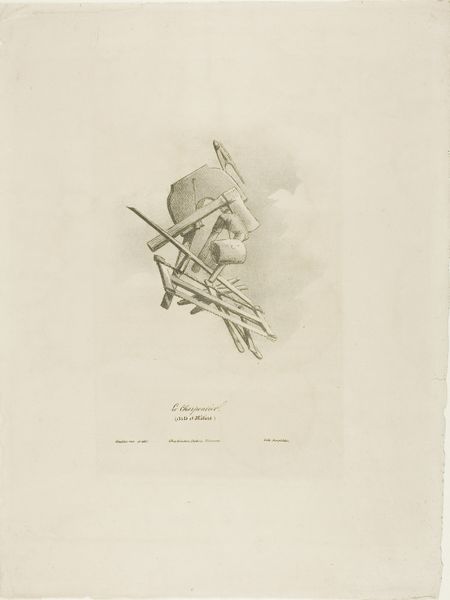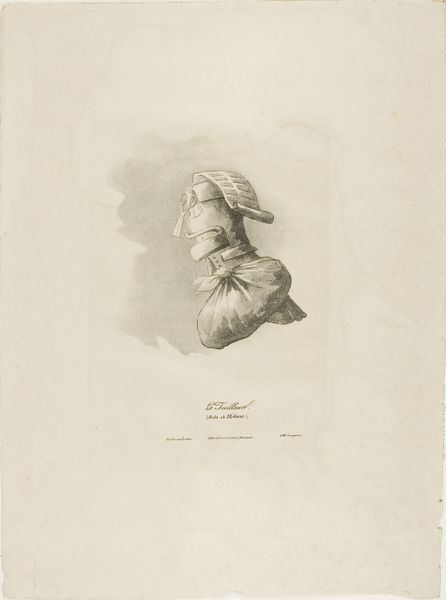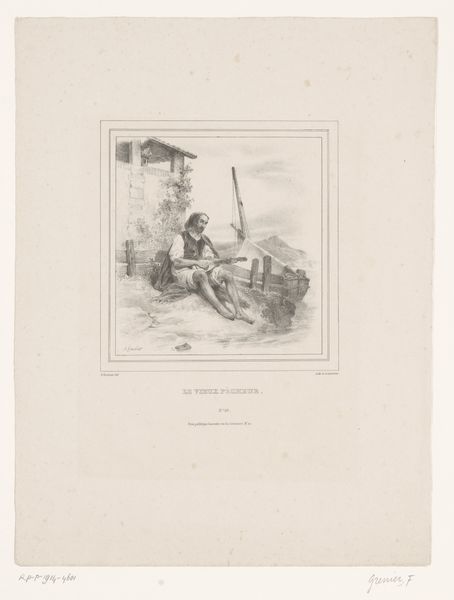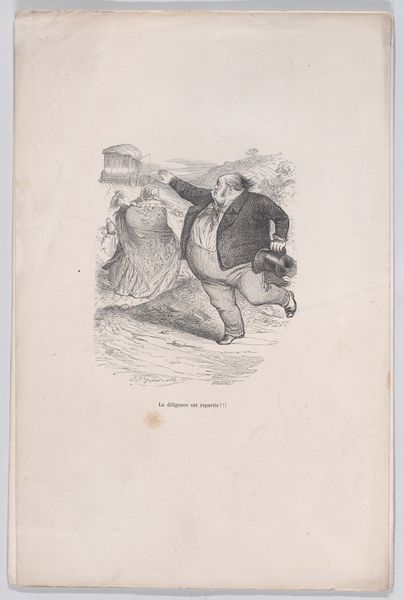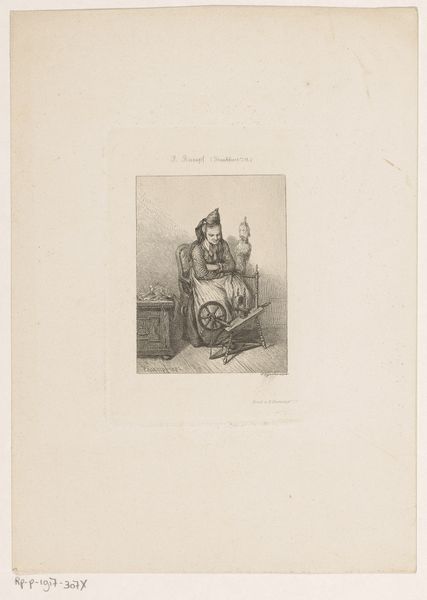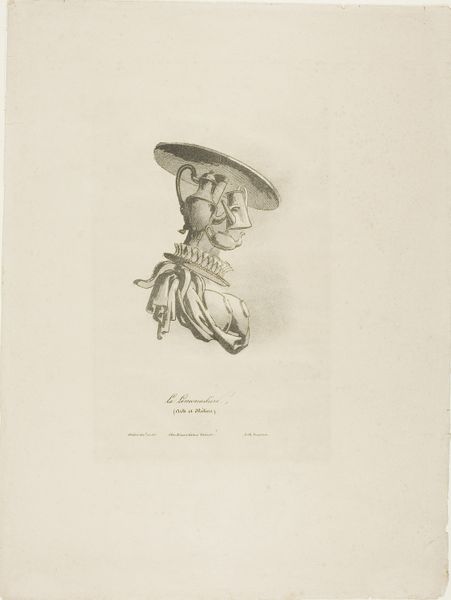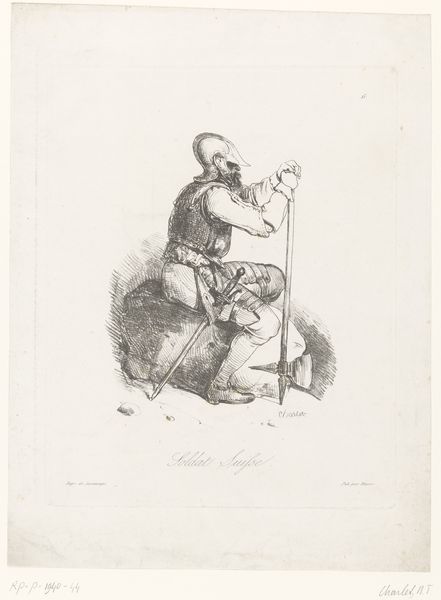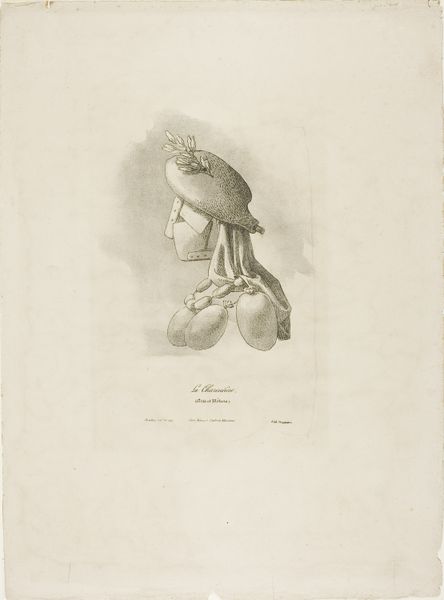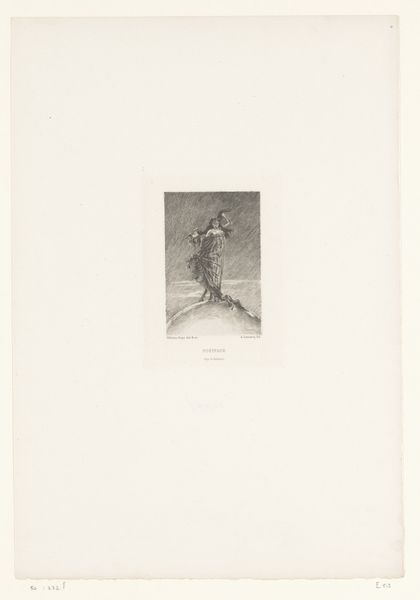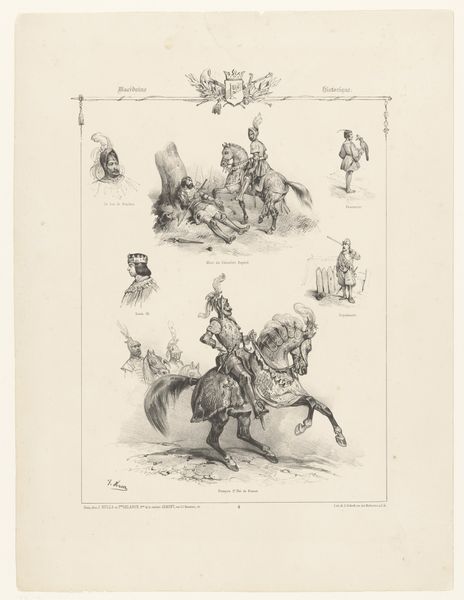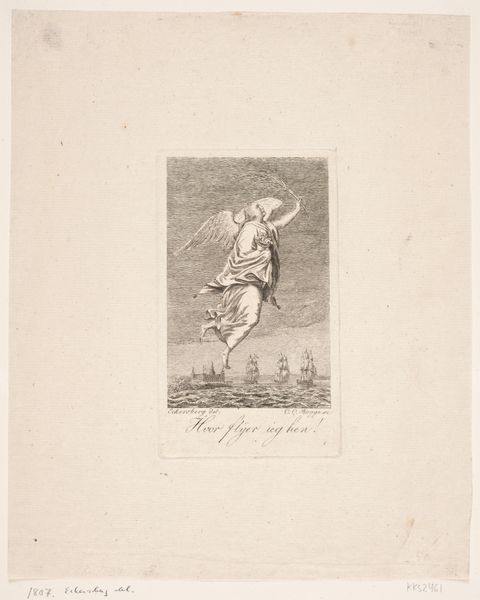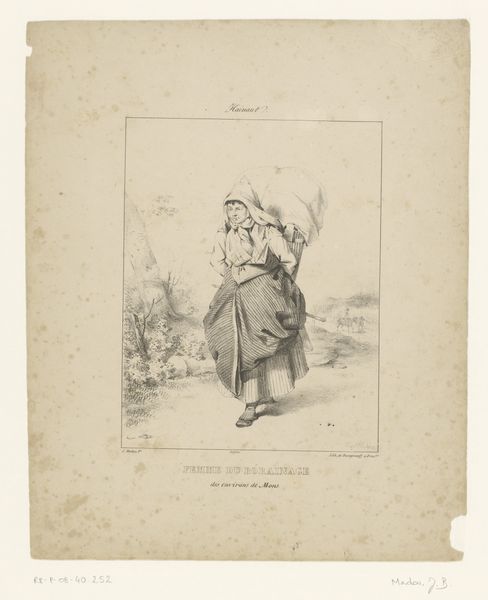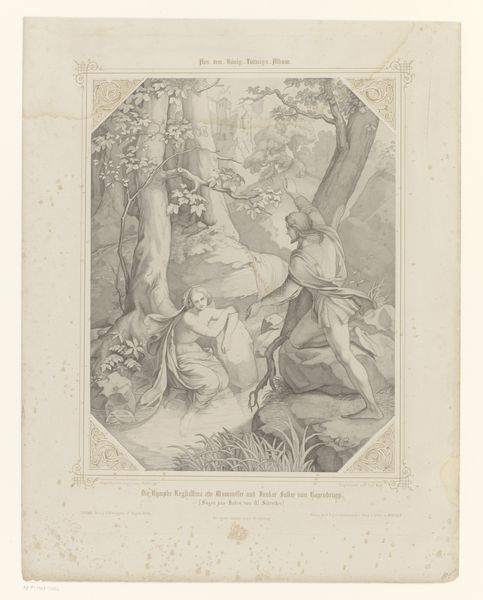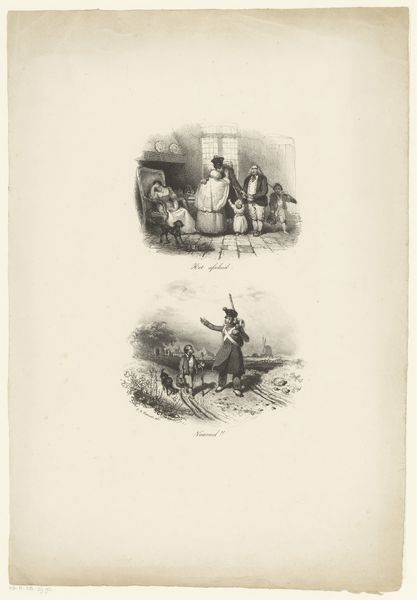
drawing, lithograph, print, paper, pencil
#
drawing
#
lithograph
# print
#
paper
#
pencil drawing
#
romanticism
#
pencil
#
genre-painting
Dimensions: 157 × 137 mm (image); 360 × 262 mm (sheet)
Copyright: Public Domain
Curator: At first glance, this lithograph strikes me as peculiar—an assembly of disembodied musical instruments sketched with meticulous detail, floating on paper. It's intriguing, but what do you make of it? Editor: I find the composition striking. The stark arrangement against that negative space forces a confrontation. "The Musician," conceived in 1838 by Bernard Gaillot, showcases an unsettling Romanticism. Can we situate this odd still life within its historical moment? Curator: Absolutely. Gaillot produced this lithograph for the publication Arts et Métiers. The focus on instruments speaks volumes. These aren't merely objects, but tools defining class and profession in rapidly industrializing France. Each violin, drum, or horn alludes to lived realities and socioeconomic tiers. Editor: And it does more than represent! The somewhat ghostly monochrome, with those blurred smudges serving as background shading, emphasizes the alienating effects of emerging technologies. What kind of labor produces these items, and for whose consumption? It creates a tangible discord. Curator: Interesting perspective! We should observe Gaillot's technique more. See how he uses delicate linework combined with those broad, soft shading techniques? It emphasizes realism but keeps a subtle detachment; reflecting societal ambivalence towards a shifting cultural landscape, romanticizing the pre-industrial even as new sounds filled society. Editor: Detachment is precise, but I find myself questioning the gendering here. Who gets to wield these instruments in the mid-19th century? Are working-class individuals represented? How do gender and race intersect? The context dictates that such roles were intensely stratified and exclusionary. Curator: This leads to discussing how institutions play a part in our engagement, doesn't it? Works presented within the halls of museums are perceived from very distinct standpoints in history. Our perception frames this artwork as we explore issues of representation, labor, and social dynamics. Editor: It definitely speaks to power dynamics in many registers. Thanks to insights into those socio-cultural factors framing Gaillot's piece and, of course, our responses. Curator: Precisely! Reflecting on how institutions help shape art’s social presence opens new dialogues around our contemporary understanding.
Comments
No comments
Be the first to comment and join the conversation on the ultimate creative platform.
